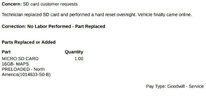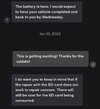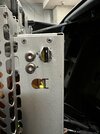Not necessary to install - with the desktop iso, you can click "Try ubuntu". With the server iso, don't install, just do alt-f2 to select another virtual console3. Install Ubuntu on the laptop (start-up your PC while holding ESC and POWER button on the laptop and select in BIOS Ubuntu install. (You can also run it directly of the USB stick if you want.)
You don't need to format the partition, since you're going to repartition the sdcard in step 11 when you run the nav-sdcard-format.sh script.7. Format partition (select left wheel sign direclty below the volumes bar) into EXT4 Linux
Actually, I think it's a good idea - the "wasted" space on a 32G card leaves lots of unused blocks that the flash controller should be able to use for bad block reallocation.Just out of curiostity, can a 32GB sdcard be formatted in 2x 16GB and will this work in a MCU 1? or does it always need to be 2x 8GB partitions? (Bit of a waist of a 32GB card)





